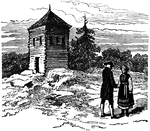![John Wesley (28 June [O.S. 17 June] 1703 – 2 March 1791) was an Anglican cleric and Christian theologian who was the founder of the (Evangelical) Arminian Methodist movement. "Methodism" was originally an unflattering nickname of the "Holy Club" at Oxford University founded by Charles Wesley but led by brother John. Methodism was well advanced in England through George Whitefield who had taken over the responsibility of the Holy Club while the Wesley brothers were in Savannah, Georgia British North America.](https://etc.usf.edu/clipart/57500/57587/57587_john_wesley_mth.gif)
John Wesley
John Wesley (28 June [O.S. 17 June] 1703 – 2 March 1791) was an Anglican cleric and Christian…
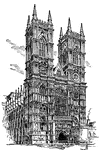
Westminster Abbey
The Collegiate Church of St Peter at Westminster, which is almost always referred to by its original…
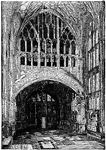
Gloucester Cathedral
"Lady Chapel of Gloucester Cathedral, England, looking toward the nave." -Whitney, 1911
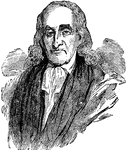
William White
The Most Reverend William White (April 4, 1748 N.S. – July 17, 1836) was the first and fourth…
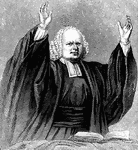
George Whitefield
George Whitefield (December 16, 1714 – September 30, 1770), was a preacher in the Church of England…

John Winthrop
John Winthrop (12 January 1588 – 26 March 1649) led a group of English Puritans to the New World,…
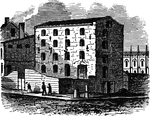
Van Cortlandt's Sugar House
Van Cortlandt's Sugar House was a famous (or infamous) prison of the Revolution. It stood on the northwest…
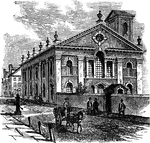
Lutheran Church, Philadelphia
The Lutheran Church in Philadelphia that Congress met at to "return thanks to the Almighty God for crowning…

Brigham Young
Brigham Young (June 1, 1801 – August 29, 1877) was an American leader in the Latter Day Saint movement.…
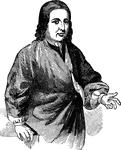
Nicolaus Ludwig Zinzendorf
Nikolaus Ludwig von Zinzendorf und Pottendorf, Imperial Count of Zinzendorf and Pottendorf, (May 26,…
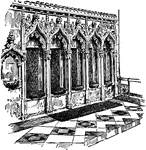
Sedilia
The sedilia in Southwell Minster, England. In church architecture, a sedile is a seat near the altar…
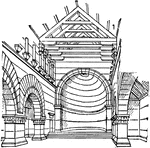
Church at Kalb Louzeh
Christian architecture is Syria diverged from Roman traditions. The abundance of hard stone, the total…
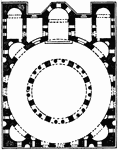
Cathedral at Bosra
Circular and polygonal plans appear in a number of Syrian examples of the early sixth century. Their…
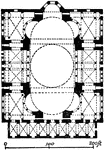
Plan of Hagia Sophia
Hagia Sophia is a former patriarchal basilica, later a mosque, now a museum in Istanbul, Turkey. Famous…

Section of Hagia Sophia
Hagia Sophia is a former patriarchal basilica, later a mosque, now a museum in Istanbul, Turkey. Famous…
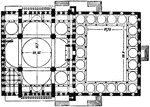
Fatih Mosque (Plan)
The Fatih Mosque (Mosque of Mehmet II, Mosque of Mehmet the Conqueror) was constructed by order of Fatih…

Section of Notre-Dame du Port
"It was in Central France, and mainly along the Loire, that the systematic development of vaulted church…
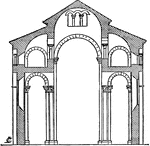
Plan of St. Sernin, Toulouse
"It was in Central France, and mainly along the Loire, that the systematic development of vaulted church…

Bay of Speyer Cathedral
A bay is a module in classical or Gothic architecture, the distance between two supports of a vault…

Plan of Durham Cathedral
The Cathedral Church of Christ, Blessed Mary the Virgin and St. Cuthbert of Durham, commonly referred…
One Bay of Transept, Winchester Cathedral
The transept is the area set crosswise to the nave in a cruciform ("cross-shaped") building in Romanesque…
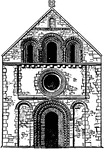
Front of Iffley Church
Very few examples remain of important Norman façades in their original form, nearly all of these…
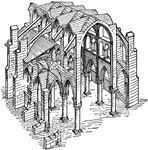
Constructive System of a Gothic Church
Constructive system of a Gothic church illustrating the principles of isolated supports and buttressing.
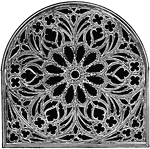
Rose Window, Church of St. Ouen, Rouen
A Rose window (or Catherine window) is often used as a generic term applied to a circular window, but…

Early Gothic Carving
The facade of a large church or cathedral, often referred to as the West Front, is generally designed…

Bay of Abbey of St. Denis
A bay is a module in classical or Gothic architecture, the distance between two supports of a vault…

One Bay of Choir, Lichfield Cathedral
Lichfield Cathedral is situated in Lichfield, Staffordshire, England. It is the only medieval English…
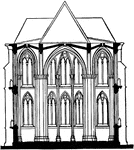
Section of Elisabeth Church, Marburg, Germany
The Elisabeth Church in Marburg was built by the Order of the Teutonic Knights in honor of Elisabeth…

One Bay, Nave of Lucca Cathedral
The Cathedral of St Martin (Italian Duomo) is a church in Lucca, Italy. It was begun in 1063 by Bishop…

Section of the Dome of Duomo, Florence
The Basilica di Santa Maria del Fiore is the cathedral church (Duomo) of Florence, Italy, begun in 1296…

Plan of Louvre and Tuileries, Paris
The palais du Louvre in Paris, on the Right Bank of the Seine is a former royal palace, situated between…

Ely Cathedral
Ely Cathedral (in full, The Cathedral Church of the Holy and Undivided Trinity of Ely) is the principal…

Sexpartite Vaulting
The Nave of Bourges Cathedral in France showing the sexpartite vaulting, divided into six parts.
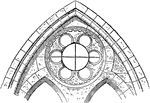
Clerestory
The "clearstory window of St. Leu d'Esserent, France" showing a sexfoil window, of six petals. -Whitney,…

Spinning Wheel
A frame with a spinning wheel in the foregroud. A ship can be seen on the left and a church steeple…
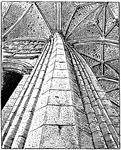
Refinement
"Architectural Refinement from Church of St. Quentin, France ... deviations from the geometrical…

French Leaf Renaissance
The French Renaissance Leaf design tend to look more formal. This design was found in a church in Epernay…

Dolphin Frieze
The Dolphin Frieze is a part of a larger frieze found in Rome at the Arco della chiesa nuovo (the arc…

Satyr Mask
The Satyr Mask (Greek Mythological character) was designed during the Italian Renaissance by Sansovino,…
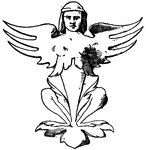
Winged Grotesque Pilaster
The Winged Grotesque pilaster is a squatting winged female without arms. It is found on the tomb of…
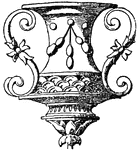
Large Vase
This large vase was designed for the tomb of Louis XII in the Church of St. Denis, France during the…
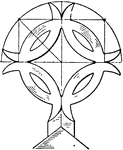
Gable of Church Cross
The gable of Church Cross is found in St. Urban's, Unterlimburg, Germany. It is used as a finial on…

Bracket Piscina Pendant Knob
The bracket piscina pendant knob is found under the piscina of a church. It is a 16th century French…
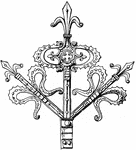
Gothic Hinge
The gothic hinge is found on a church door in Viersen, Germany. It is an extended strap hinge that is…
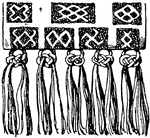
Medieval Maniple Valence
The medieval maniple valence is an embroidered band of silk that is typically worn by priests in the…
Decorated Shaft
The decorated shaft is found in a church in Tournus, France. It is a design of geometrical networks.
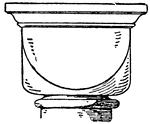
Romanesque Cushion Capital
The Romanesque Cushion Capital is found in St. Gereon's church in Cologne, Germany. It is a design of…
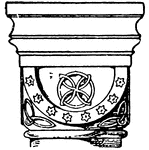
Romanesque Cushion Capital
This Romanesque Cushion Capital is found in the Abbey church in Germany. It is a design of a half sphere…
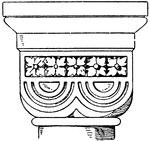
Romanesque Double-Cushion Capital
The Romanesque Double-Cushion Capital is an 11th century design found in the Rosheim church in France.…
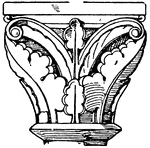
Romanesque Capital
This Romanesque capital is found in cloisters of a church. It is a simpler design that is reminiscent…

Romanesque Capital
This Romanesque capital is found in cloisters of a church. It is a simpler design that is reminiscent…
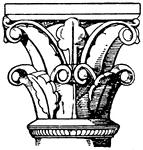
Romanesque Capital
This Romanesque capital is found in cloisters of a church. It is a simpler design that is reminiscent…

Wood Baluster
The wood baluster is an Italian Renaissance design that is found as stalls in the St. Maria Novella…
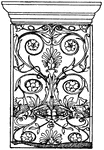
Renaissance Console
This Renaissance console is made out of marble. It is an Italian design found in the Santa Maria de…
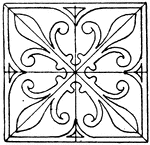
Gothic Square Panel
The Gothic square panel is a 15th century design of tiles found in Bloxham church, England.
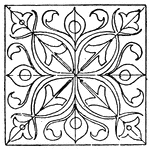
Renaissance Square Panel
The Renaissance square panel is a motif that comes from a robe in the St. Croce church in Florence,…
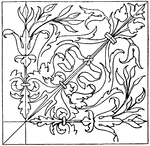
Renaissance Square Panel
The Renaissance square panel is an intarsia (wood inlaying) design found on the stalls of a church in…
